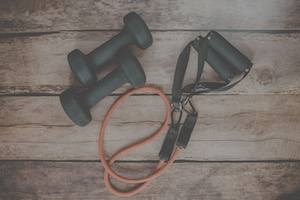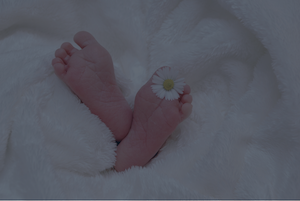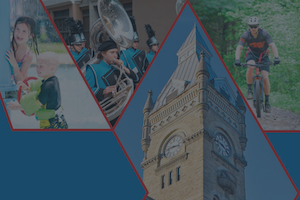Butler Memorial offers summer work opportunity
Before doctors perform an operation, prescribe drugs or treat an injury, they have to figure out what’s ailing a patient. That’s a task sometimes easier said than done, which is one thing Maunish Jani, a rising senior at Pine-Richland High School, learned this summer while shadowing doctors at Butler Memorial Hospital.
Maunish said that since June, he has shadowed staff members of several departments of the hospital, in pursuit of learning more about potential health care careers. He said Thursday, July 31, that what struck him most about shadowing doctors was their demeanor in talking with patients — it was a lot more jovial than he assumed.
“A lot of it is seeing how you can help people without it looking like you’re helping,” Maunish said. “You meet a patient and maybe you just make a joke and make them feel comfortable.”
Maunish is one of more than 40 high school students who are part of Butler Memorial Hospital’s Junior Auxiliary Program this summer. The program, a revamp of the Candy Striper program, started in 2023 to give rising high school sophomores, juniors and seniors an in-depth look at hospital work by shadowing staff members.
Students who apply for the junior auxiliary have to record 30 hours of time in the program, which can be completed on their own schedules from June through mid-August. The facilitator of the program, nurse navigator in education Ronee Haller, said some hospital staff members have taken students into operating rooms, patient checkups and even the maternity ward so they can glimpse job possibilities.
The students fill out an application, send a letter of recommendation and interview with Haller to be considered for the program.
It all depends on what the student wants to learn.
“Some are interested in nursing, some are interested in medical school, some don't know what they are interested in,” Haller said. “Some of our staff has gone above and beyond in what they’ve let them see and shadow on.”
On Thursday, July 31, Haller assembled two dozen members of the junior auxiliary to do a walk-through of a Butler Ambulance Service ambulance, so they could get a look at another health care-related career. In another part of the hospital, the students experienced equipment that would be used to lift and move patients with mobility troubles.
These demonstrations and agency visits are common for the program, and Haller said some students even venture outside the walls of Butler Memorial, going to the Independence Health System Crossroads Campus or individual doctors’ offices.
After more than a month of being in the program, some of the students already have a better idea of their future pursuits in health care.
Madi Lewis, a rising senior at Butler Senior High School, is in her second year with the junior auxiliary, and said viewing a day in the life at the hospital from different positions has led her to a possible career.
“I followed some physician assistants around, so I’m leaning toward being a physician assistant,” Madi said. “It kind of helped me decide what I wanted to do.”
Alec Wright, another rising senior at Butler Senior High School, said he spent some time in the operating room this summer.
“This was a way for me to see if I wanted to work in a hospital,” Alec said. “I found out I was interested in the operating room setting, so I think I’m going to pursue that.”
Maunish said he found an interest in cardiology, after shadowing some staff members in that department of the hospital.
According to Haller, the Junior Auxiliary Program gives students a fair bit of autonomy to explore different departments — they just have to complete the required amount of volunteer hours for the summer.
“They are encouraged to explore as many things as they can,” Haller said. “It’s volunteering and job shadowing to hopefully get them excited about health care careers.”
Students lined up to go on the ambulance tour Thursday, their identical red shirts bearing the junior auxiliary type earning a number of “hellos” from staff passing by them in the hall.
Haller commented that the students interact with many staff members in the hospital, but also many patients and other people walking its halls. She said interaction for the students is almost just as important as the job shadows they complete, because many people in health care jobs benefit from having strong social skills.
But like scheduling job shadows with staff members, it’s often up to the students
“I always tell them if you have nothing to do, go start talking to somebody, because that’s a huge part of health care,” Haller said.
While intimidating at first, some of the students said they found a positive response from the patients they have spoken with.
“I’ve enjoyed helping out with the patients,” Alec said. “Most of them are pretty nice; they like talking to us.”
Maunish, too, said speaking with patients has been enlightening. He said watching their interactions with nurses and doctors has shown him positive aspects of health care careers that he wouldn’t have known about if not for the Junior Auxiliary Program.
“I’ve met a lot of patients, learning what it’s like to be the patient and not the doctor,” Maunish said. “I’ve heard a lot from the doctors on what it’s like from their perspective.”
Madi said she has had a lot of interactions with health care professionals, because she gets “hurt a lot.” She sported a wrist brace July 31 while going through the ambulance walk-through.
Madi signed up for a second year with the junior auxiliary, she said, because the first year gave her a lot of good experiences from the other side of the hospital bed.
“Last year, I saw a shoulder replacement, and I thought that was really cool,” Madi said. “I kind of just wanted to see more.”














